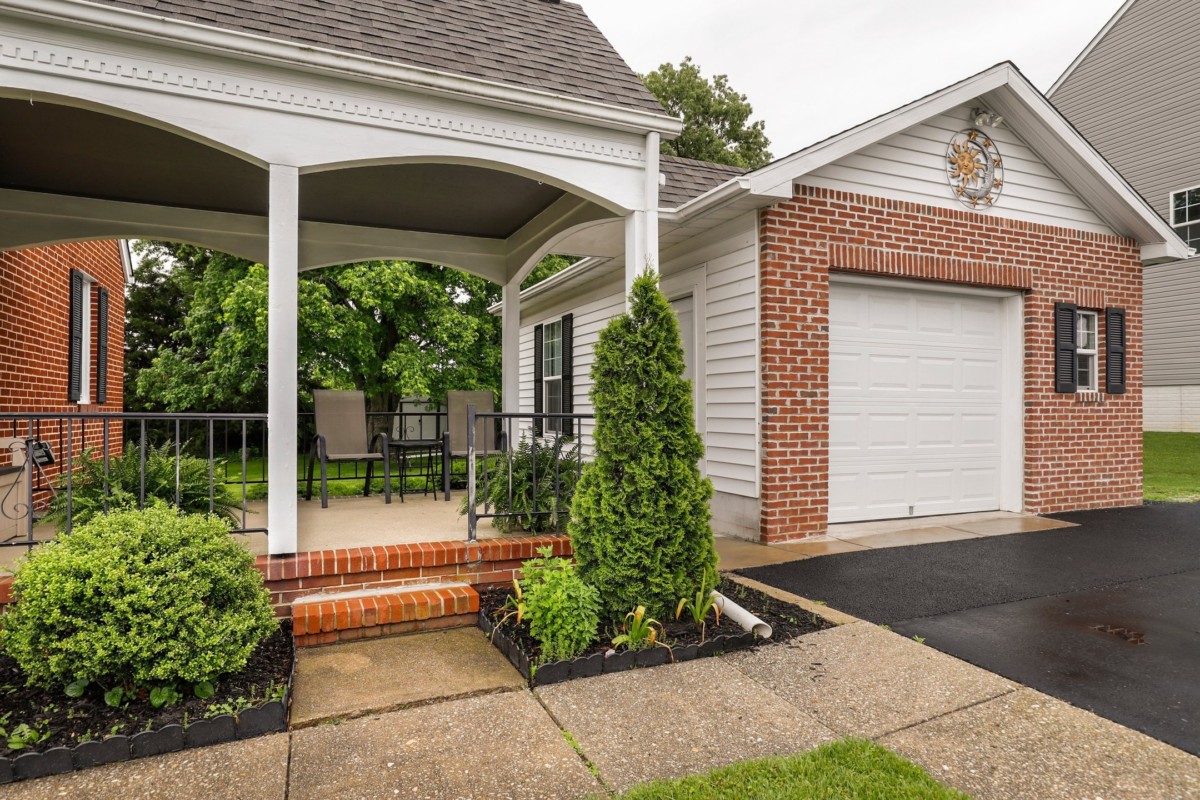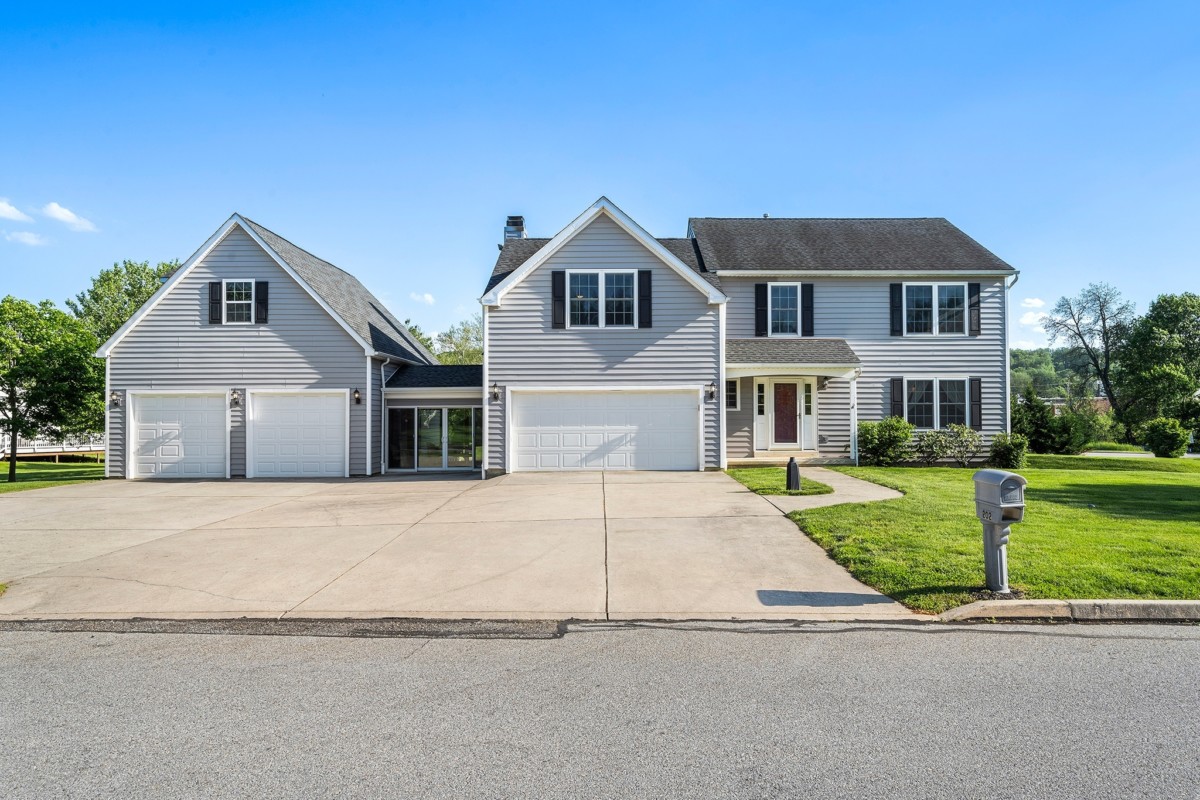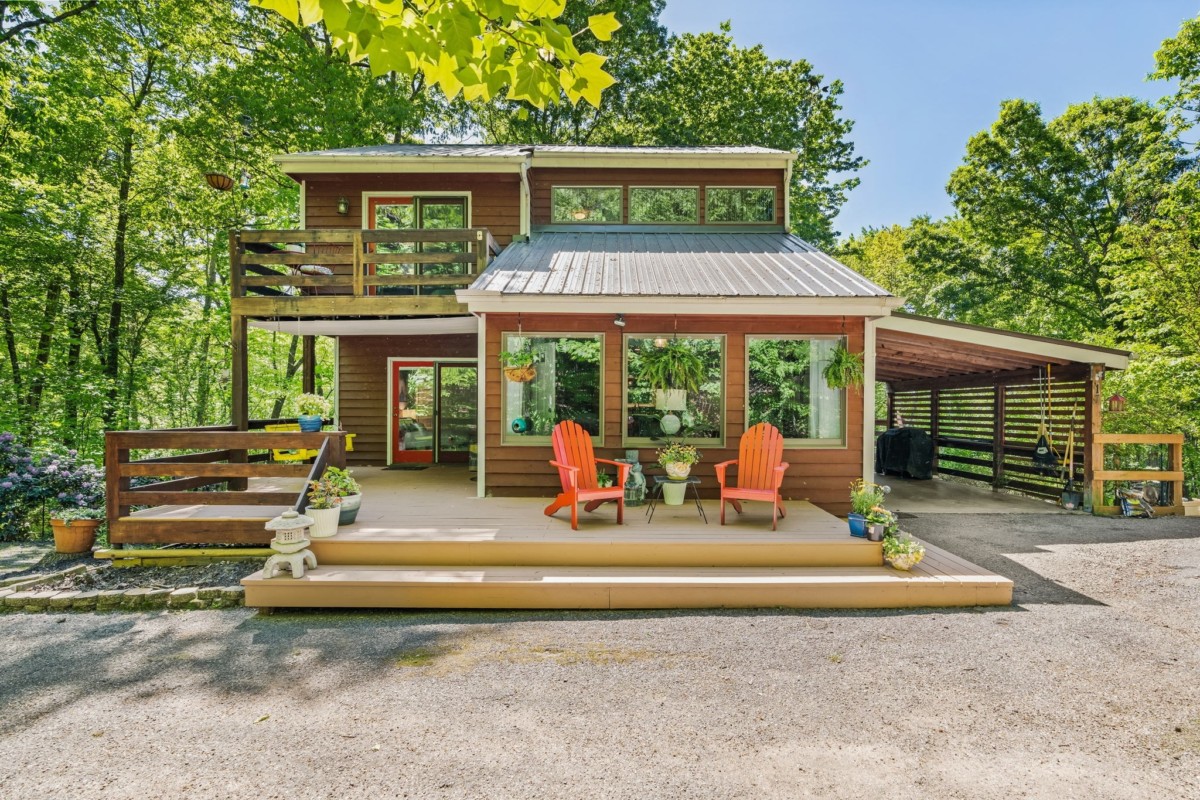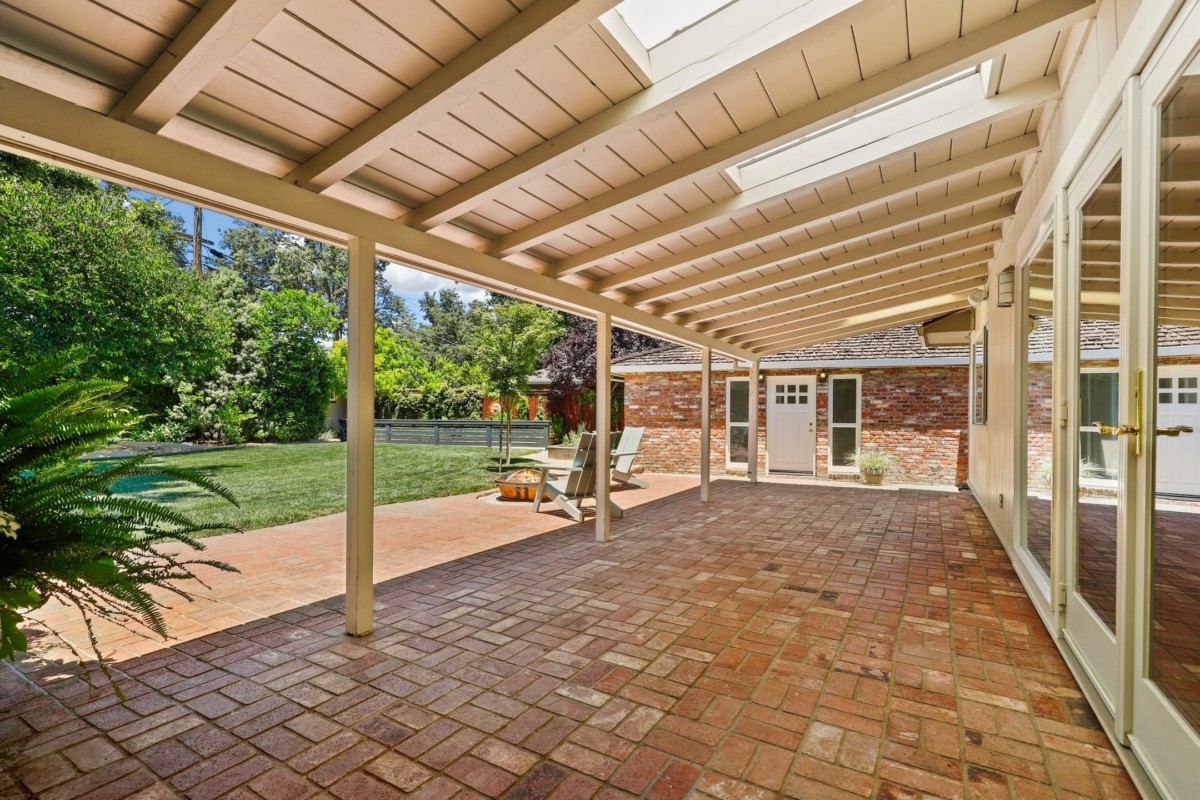The Dogtrot House: Practical, Green Living That Stands the Test of Time
Indoor-outdoor living spaces are becoming a coveted design trend for homeowners today, and if you’re looking for an iconic house style that seamlessly blends the two, look no further than the Dogtrot house. Characterized by an open breezeway running through the middle of the home, the Dogtrot house plan has been in popular use for the last 200 years of American architecture due to its simple and effective design, allowing it to be modified for different climates and purposes. Today, modern Dogtrot homes incorporate passive ventilation and hybrid indoor/outdoor living spaces into their floorplans— perfect for people looking for green homes.
This article will walk you through the basics of the Dogtrot style, how to find a Dogtrot in your area, and the pros and cons of this house style to help you determine if the Dogtrot is the right fit for you. Let’s dive into the history of how this house style got its unique name.
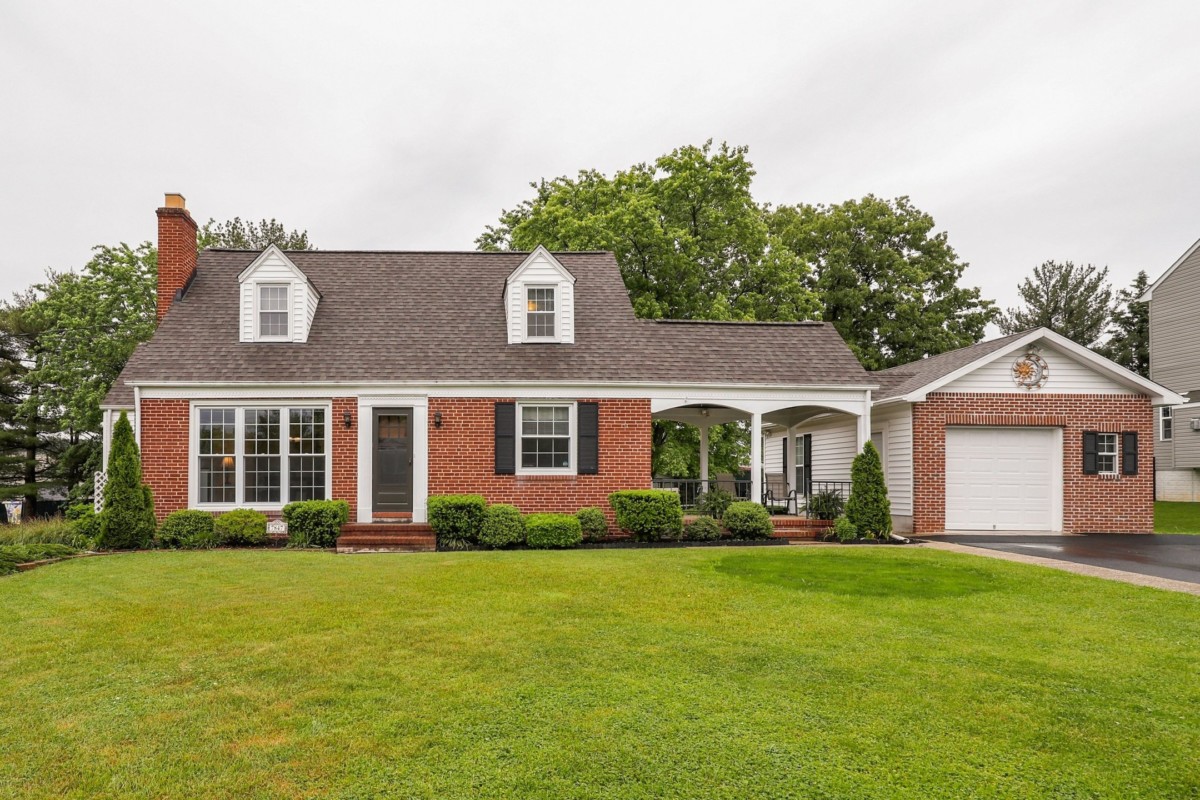
History of the Dogtrot house
The heyday of the Dogtrot house dates back to the early-19th century, when homes were built using available building materials that suited their area’s climate and natural resources, and could withstand the warmer temperatures of the Southeastern U.S.
Most dogtrots were built in two or more stages with a basic cabin consisting of one or two rooms. Then, when the inhabitants needed to expand their space, they added a second cabin to the original. Instead of sharing a wall with the original cabin, the addition would be built a short distance away, with the roof extending across the open space and over the new cabin, creating the iconic dogtrot between the two buildings.
Pre-dating air conditioning or electricity, Dogtrot houses — sometimes called a possum-trot, dog-run, or breezeway home— relied on incorporating designs that feature flexible indoor/outdoor space into the floor plan. These spaces took advantage of cross breezes and provided passive cooling to the two separate living areas during the warmer months. And in the event of inclement weather, the covered breezeway could double as a shelter for goods, equipment, or animals. While the adoption of electric fans and air conditioning caused the dogtrot house to lose some of its popularity, it never went entirely out of style. Thankfully, Dogtrot houses have seen some resurgence in recent years as green building techniques have become greater considerations for today’s homebuyers and sellers, giving the nod to its versatility.
While there’s debate as to whether the style originated in the mountains of Kentucky and Tennessee or the South Carolina lowlands, it’s widely accepted that the idea of the Dogtrot house was developed in several areas across the South around the same time. Some even speculate that the house style came from Scandanavian settlers who built the Dogtrot as a variation of pair-houses. At any rate, this house style offers its inhabitants flexibility, practicality, and style, regardless of its origin.
Characteristics of the Dogtrot house
The core characteristic of Dogtrot houses is incorporating outdoor space into the living quarters. Traditional Dogtrot houses consisted of two single-story living spaces separated by an open passage. The front and back porches would span the width of the house to provide shade and protect its inhabitants from the elements. Traditional dogtrots were also designed with airflow in mind and were typically built off the ground to provide optimal cooling conditions.
While the configuration of the interior quarters varies, standard layouts of dogtrot houses include a living area that opens to the center of the breezeway, a second door exiting to one of the porches, and windows placed throughout the home to optimize airflow. Kitchens were also kept separated from the other living areas to confine the heat to one part of the house, though both sides would have a fireplace for heating in the cooler months.
Types of Dogtrot houses
Dogtrot houses remain an iconic house style for a reason. They offer a ton of versatility to your floor plan, and you can also find them or their variations in many regions and price points across the U.S. housing market. Here are some of the different types of dogtrot houses you can find today:
Traditional Dogtrot Cabins
Traditional Dogtrot cabins are commonly found in rural areas in the Southern United States. These homes are typically one-story log structures, with a central breezeway to keep the kitchen and dining room separate from the sleeping quarters and two chimneys on either end of the house. If you’re lucky to come across a traditional Dogtrot cabin, keep in mind that historic homes require special care, so your choices for updating the home to suit your needs may be limited.
Modern Dogtrot Houses
The Modern Dogtrot house can come in many design styles, most notably Scandanavian and Modern Craftsman. These homes are particularly popular in coastal areas, especially in the Northeast, Mid-Atlantic, and Southeastern U.S. While the Modern counterparts are often two-story houses, they still incorporate a central or off-center breezeway in the home. In warmer climates, the breezeway doubles as an additional living area with foldaway doors that can enclose the space when needed, making them perfect for those who want to incorporate the natural surroundings into their living space.
Modern dogtrots do run on the higher end of the price range as many of these homes are often custom-built and much bigger than their predecessors. But if you want a home with a unique yet functional design element, Modern dogtrots are for you.
House-to-garage Breezeway Homes
House-to-garage Breezeway homes are a less expensive alternative that connects the home to a detached garage via a covered area, screened-in porch, or enclosed room. Since they’re easier to build, house-to-garage breezeway homes can be found in many areas of the U.S., including the Northeast and the Midwest, where the space is often enclosed to provide a three- or four-season room.
But if you still want the aesthetic appeal of a breezeway, consider looking for a ranch-style home with a detached garage and adding a dogtrot extension to connect the two. For DIY-savvy or budget-conscious homeowners, a pergola or other covered structure can be used to create a dogtrot feel without the hefty price tag.
Best Dogtrot alternatives
It’s not always possible to find Dogtrot homes or homes with a breezeway in your area. If this is the case for you, consider these alternatives:
- Look for a home with good airflow. You’ll know that a house has good airflow if there’s a clear path between windows and doors on opposite sides of the home. House styles that are known to take advantage of local wind conditions include the American foursquare, bungalow, and some ranches.
- Look for a home with a deep front porch, covered deck, or wraparound porch. These features will give you ample hybrid space without using a breezeway.
- Look for a home with a gazebo, sunroom, or screened porch. These give you the benefit of a hybrid interior-exterior space without letting the bugs in.
- Look for a home with a paved patio or deck that can convert into a hybrid interior-exterior space with a roof or pergola.
- Look for a home that offers space on the lot to incorporate a Dogtrot breezeway or other design elements that brings the outdoors in.
However, if your heart is set on a Dogtrot house, you may want to consider building one yourself. Many floorplans are available for purchase, and you can work with a knowledgeable architect who specializes in drawing indoor-outdoor living spaces to build your dream home on any suitable lot. Another alternative is a tiny house, cabin, or wooden yurt. These homes provide a fluid connection to the great outdoors and emulate the same characteristics as the dogtrot.
Where can you typically find Dogtrot houses?
Traditional dogtrot houses are most popular throughout the South, especially in New Orleans, South Carolina, and the Appalachian Mountains. If you’re hoping to score an iconic dogtrot house, consider house-hunting in these areas:
- Alabama
- Mississippi
- Greater Louisiana
- Arkansas
- North Carolina
- Texas
If Modern Dogtrot houses are for you, they’re most popular in the state of New York, where you may find these homes for sale in Long Island. You can also find suitable alternatives in the Midwest and the Northeast.
The pros and cons of Dogtrot architecture
As with any house style, a Dogtrot house has its pros and cons to consider. The main thing to remember is that Dogtrot homes incorporate the outdoors into the home’s main living space. If that doesn’t appeal to you, you might want to consider other home features or alternatives that align better with your needs.
Pros of Dogtrot houses
The main advantage of the Dogtrot house is that it brings the outdoors in. People who love spending time outdoors will likely love the Dogtrot design, especially those living in warm climates where they can benefit from the energy-saving design elements of the Dogtrot home. Some pros include:
- A hybrid, transitional space between the interior and exterior living areas of the home.
- Flexibility to have a multifunctional space that can serve many purposes.
- Passive ventilation, lower energy bills, and natural light are built into the design.
- The Dogtrot concept can be adjusted to suit many climates.
Cons of Dogtrot houses
The disadvantages of the Dogtrot house will largely depend on two factors: what type of Dogtrot home you’re looking for (ex. historical vs. modern, traditional vs. alternative) and what you value most about your living space. Here are some cons to consider if you’re set on this house style:
- Traditional Dogtrot houses are typically one story and have fewer square feet than modern homes.
- Homes with covered breezeways can be hard to find, depending on your area.
- Modern Dogtrot houses are typically custom built and have a higher price tag than the average house.
- While the dogtrot can add interest and versatility, its resale value may fluctuate with the housing market.
- Many Dogtrot houses are located in rural or natural areas. While beautiful, you may not get a traditional neighborhood feel.
- Homes with blurry boundaries between the interior and exterior provide more opportunities for contact between you and the insects and animals in your area.
How to find Dogtrot houses for sale in your area
If a Dogtrot house suits your style, Redfin can help you find one in your area. Follow these simple steps:
1. On Redfin.com, or, using the Redfin app, type either the city’s name or a zip code where you’d like to begin looking for a home into the Search bar. (For example, type “New Orleans” to pull up homes for sale in New Orleans, LA). Press enter.
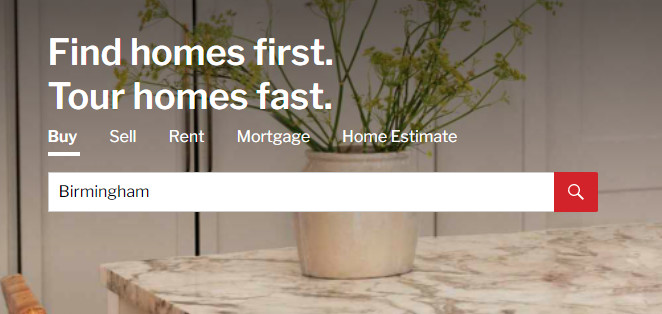
2. Near the top of the next page, on the right side, you’ll see “More Filters.” Click on that and scroll to the “Keywords” box near the bottom of the page.
3. Type the word “Dogtrot” into the Keywords box and press “Apply Filters.” You can also try varying keywords, such as “dog trot,” “possum-trot,” “breezeway,” “sun room,” or “three season room,” to increase your search results.
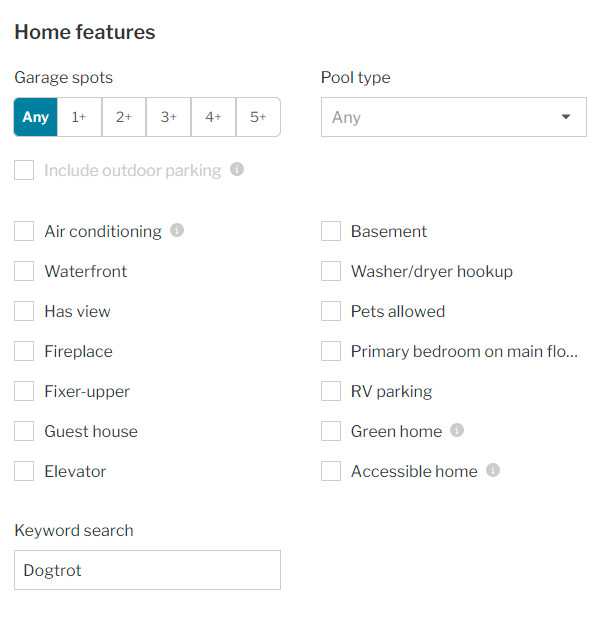
Voila! All Dogtrot homes within the city name or zip code you entered will populate the page, and you’ll be able to begin your search.
The post The Dogtrot House: Practical, Green Living That Stands the Test of Time appeared first on Redfin | Real Estate Tips for Home Buying, Selling & More.

